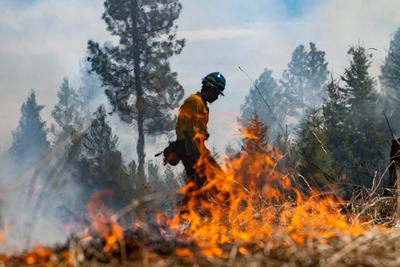While forest managers have proved adept of stamping out small wildfires, they have been less successful at suppressing larger, more devastating burns. The result is that the average wildfire is more severe than it would be without human intervention.
This phenomenon, called “suppression bias,” is reshaping forests. Scientists compared “suppression bias” to the overuse of antibiotics, which has been shown to eliminate all but the most potent of infections. With fire suppression, as generally practiced, forest managers are extinguishing all but the most ferocious of blazes, according to a new modeling study in Nature Communications.
With climate change, hotter, drier weather is fueling more intense burns globally, as is the buildup of trees and brush from decades of fire suppression. The new study suggests “suppression bias” is only making matters worse.
“Over a human lifespan, the modeled impacts of the suppression bias outweigh those from fuel accumulation or climate change alone,” lead author Mark Kreider, a graduate student at the University of Montana, said in a statement. “By attempting to suppress all fires, we are bringing a more severe future to the present.”
By and large, foresters have only succeeded in stopping smaller blazes that burn through underbrush and thin-barked trees. The research found that forest managers can improve the health of forests by allowing small fires to burn when the weather is mild, and suppressing burns only when hot, dry, windy conditions would cause fires to get out of hand.
ALSO ON YALE E360
The Beleaguered Whitebark Pine Is in Trouble. Can It Be Saved?



